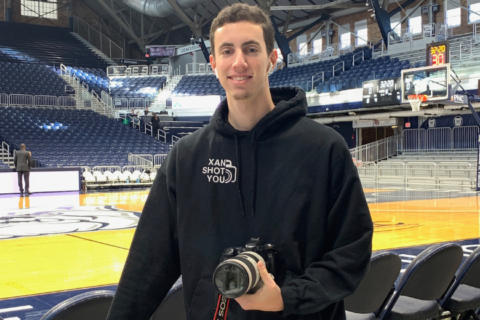In the vernacular, CYA means cover your … well, a more raw word for posterior. But a D.C.-area advocate for home safety uses the term as a handy acronym for checking alarms, in addition to offering other safety tips.
Daylight saving time ends every year on the first Sunday in November, when the time falls back an hour at 2 a.m. to become 1 a.m. Eastern Standard Time.
“When you change your clock, get into that lifesaving habit and check your smoke alarms and your carbon monoxide alarms, as well,” Montgomery County Fire and Rescue Service spokesman Pete Piringer said in a tweet.
The threat from fires and carbon monoxide poisoning hit home for NBC Washington reporter Aimee Cho, who was prompted to buy a carbon monoxide detector after she was hospitalized.
Cho said she was cleaning her stove and accidentally turned on one of the knobs that released natural gas into her home all night while she slept. Thankfully, Cho got the help she needed and bought a carbon monoxide detector as soon as she got home from the hospital.
A working smoke detector gives you a fighting chance for a safe escape in the event your home catches fire. There should be one on every level of your home. Current Maryland code for newer homes requires smoke alarms in every bedroom.
“Most deadly fires occur when people are sleeping, between 11 p.m. and 6 a.m.,” Piringer told WTOP. “So if you don’t have a smoke alarm, if you don’t have something that’s going to arouse you, it’s very likely it’s going to be too late. It’s not the fire that kills you. It’s actually the smoke.”
Close before you doze. Closing the bedroom door creates an additional barrier for smoke and heat.
“Nowadays, with the materials that we have in our homes, they’re mostly synthetic, they burn very fast, hot and fast. Used to be years ago, you’d have 10 or 15 minutes to get out of the house. Now you only have two or three minutes, just because of the way the fires burn,” Piringer said.
Has your family discussed the fire plan?
- Identify at least two routes out of every room.
- Stay low and go. Cleaner, breathable air is closer to the floor. Crawl out.
- Get out and stay out.
- Designate a meeting place outside so everyone can be accounted for.
- Call 911 from a safe location outside.
Temperatures are falling, the heating season is beginning and it’s a busy time of year for fires.
“Cooking is the No. 1 cause of fires year round. But this time of the year, a heating system or those fires related to heating equipment is the No. 1 reason why things occur,” Piringer said, emphasizing that there should be a 3-foot circle of safe space free of anything combustible around any heat source, such as a wood stove, fireplace or space heater.








